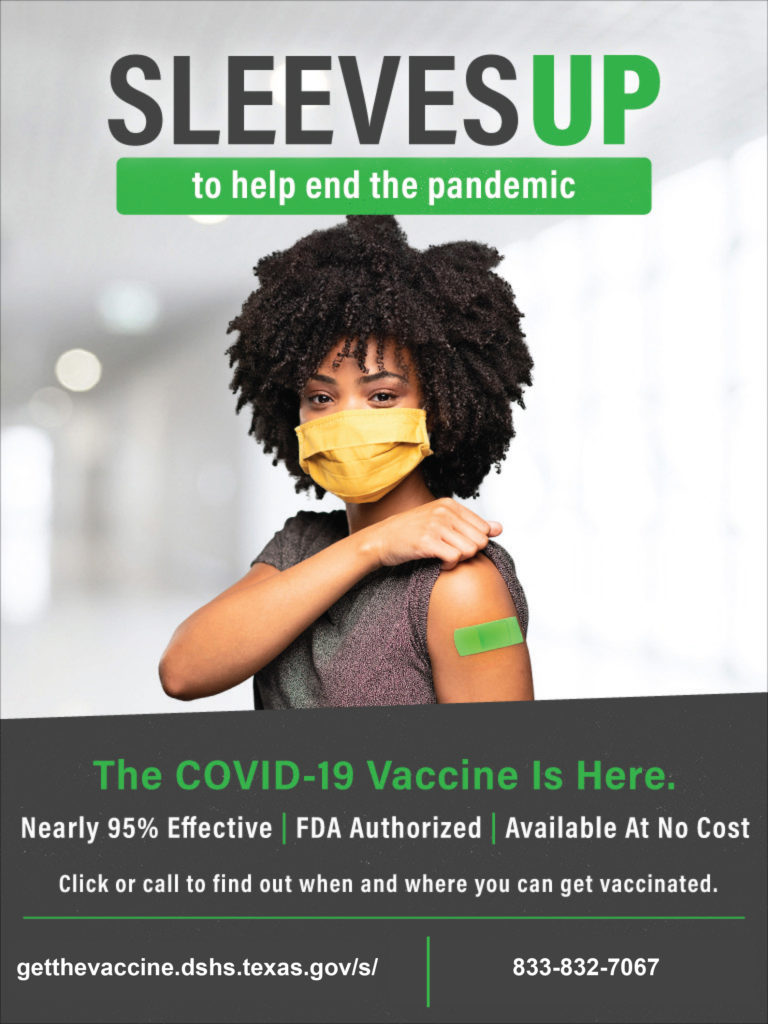Excerpted from a Stateline article by Christine Vestal
Nationwide, efforts to vaccinate people at churches and other trusted locations in targeted communities appears to be gaining momentum.
MedStar Mobile Healthcare, a Fort Worth, Texas, regional emergency medical service, hit what leaders there considered a home run recently, vaccinating 757 people in a single day at Mount Olive Missionary Baptist Church, a predominantly Black church on the city’s east side.
Meanwhile, a mass vaccination clinic at Texas Motor Speedway in north Fort Worth used 16 drive-thru lanes to vaccinate 10,000 residents per day.
Both approaches are essential, said Mount Olive Assistant Pastor Louis Stewart. “It’s not an either-or situation.”
Nationwide, health equity advocates and public health experts agree that to outrun the virus and its variants, states and communities must operate mass vaccination sites for those with the time and transportation to get there, while simultaneously launching hundreds of smaller neighborhood efforts designed to meet the needs of the people who have been most devastated by the virus: low-income communities of color.
Now that age limits for COVID-19 immunization have been dropped in most states, speed and efficiency are more important than ever, public health experts say.
The federal government is establishing 441 mass vaccination sites across the country with the aim of collectively vaccinating a million people per day. At the same time, vaccine drives organized by state and local health agencies, community health centers, nonprofits and faith-based organizations are proliferating.
Declining Hesitancy
Although demand for COVID-19 shots is declining in some states, a growing share of Americans say they plan to get vaccinated, according to a recent survey by the Pew Research Center.
In March, 69% of people surveyed said they planned to or already had received a shot, up significantly from the 60% who said in November that they planned to get vaccinated.
In the same survey, 61% of Black Americans said they planned to get vaccinated, up sharply from 42% in November. Since the vaccination campaign began in December, differences in acceptance rates among Black, White, Hispanic and Asian American adults have been shrinking.
‘Secret Sauce’
The first time the MedStar crew in Fort Worth set up a mobile COVID-19 vaccination site at a fire station in January, only 39 people showed up. But after rolling its fully equipped mobile vaccination operations into a different neighborhood every week since then, the team has started vaccinating at least 300 residents per day at each site.
Still, MedStar estimated that its supply of vaccines and staffing levels meant workers could deliver three times that many shots in a day. Demand was the limiting factor.
It wasn’t until they got a call from the Mount Olive Missionary Baptist Church that it became clear what was needed to boost turnout. Pastor William Glynn and Assistant Pastor Stewart already had gotten their vaccines and had been urging their congregation to do the same for months.
“We figured out the secret sauce,” said Matt Zavadsky, chief transformation officer for MedStar.
“We had not previously understood the importance of working with local community influencers to ensure people feel confident enough about the vaccine to turn up for a shot,” he said. “Now we know we can’t just schedule a clinic and expect them to come.”
Once MedStar scheduled the Mount Olive clinic, the pastors used a Sunday services webcast to urge everyone to come. They posted messages on their Facebook page, and they reminded everyone who attended Wednesday Bible study and Saturday prayer calls of the importance of protecting themselves and their community by getting vaccinated, Stewart said.
As an added incentive, the pastors promised to hold an in-person Easter Sunday service in the sanctuary for the first time since the pandemic began. Anyone who has received both shots could attend.
On Wednesday, March 10, the church’s COVID-19 vaccination clinic was scheduled to start at 8 a.m. When he arrived at 6:30 a.m., Stewart said, more than 150 people were already lined up.
“I asked the first person in line when he got there, and he said 5 a.m. They were all pretty eager to get their vaccine,” he said.
But it helped that everyone knew how to get to the church and that they would be among friends and trusted church leaders when they got their shot, Stewart said. “None of those people would have made it to the racetrack to get a vaccination.”

The Secret Sauce to overcoming vaccine hesitancy – your local church
04/07/2021